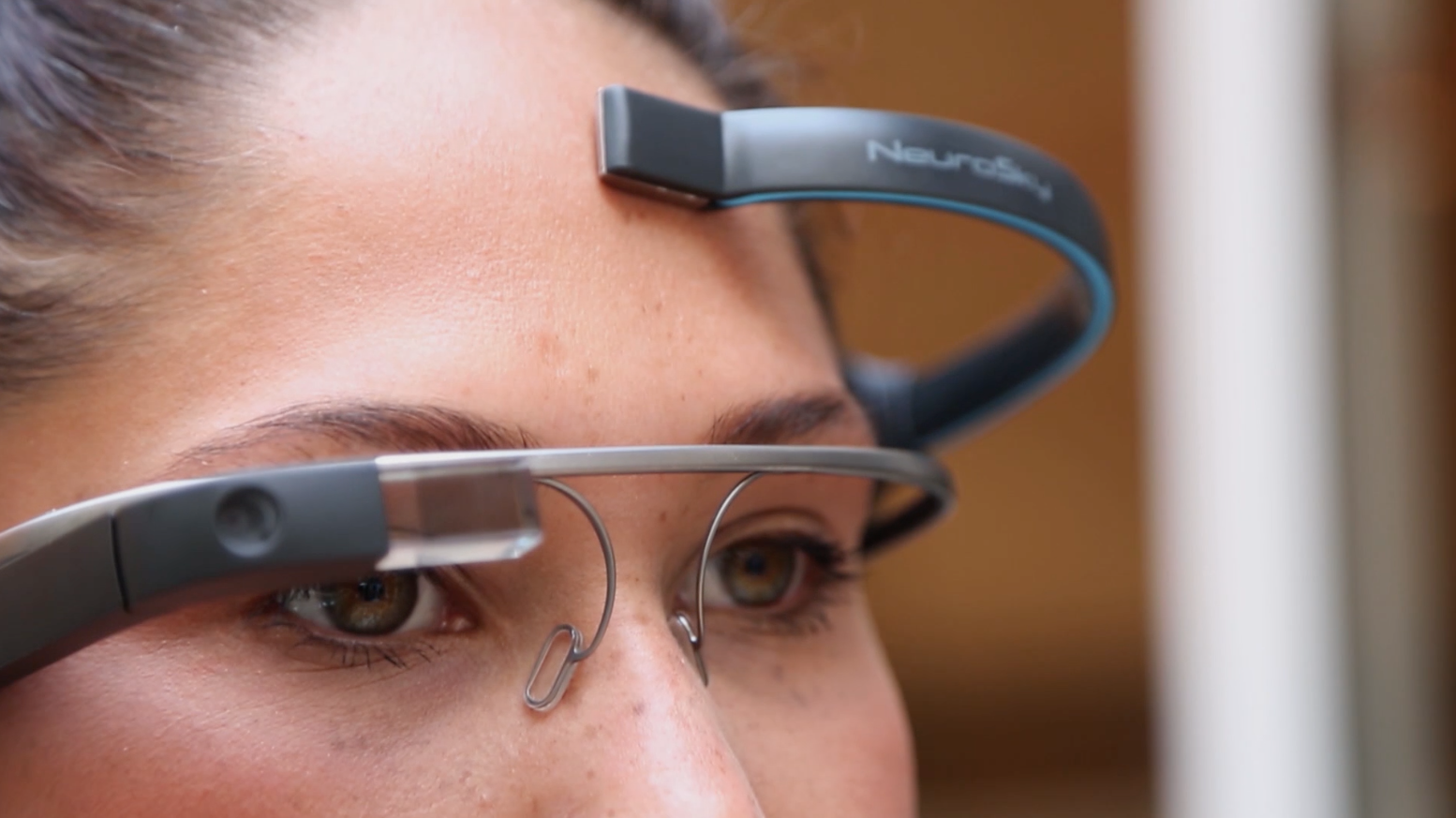
A new app is taking the Google Glass hands-free model one step further by letting users control the device with their thoughts.
The program, called MindRDR, uses Glass and another head-mounted sensor to analyze the user’s brainwaves and gauge the user’s level of focus. When the level crosses a certain threshold, visualized by a horizontal line on the Glass interface, MindRDR tells Glass to snap a picture. If the user keeps concentrating, the app tells Glass to post the photo to social media.
“Google Glass cannot read your mind,” a Google spokesperson said in an email to TIME. “This particular application seems to work through a separate piece of kit which you attach to Glass. We have not reviewed, nor approved the app so it won’t be available in the Glass app store. Of course, we are always interested in hearing about new applications of Glass.”
The app is free and open source, so anyone can tinker with it to develop new functions. This Place, the London-based developer behind the software, says MindRDR could be used in the future to allow people with locked-in-syndrome, severe multiple sclerosis or quadriplegia to communicate through Google Glass. The company says Stephen Hawking has expressed interest in the software.
More Must-Reads from TIME
- How the Economy is Doing in the Swing States
- Harris Battles For the Bro Vote
- Our Guide to Voting in the 2024 Election
- Mel Robbins Will Make You Do It
- Why Vinegar Is So Good for You
- You Don’t Have to Dread the End of Daylight Saving
- The 20 Best Halloween TV Episodes of All Time
- Meet TIME's Newest Class of Next Generation Leaders
Contact us at letters@time.com